If there is one place I would rather be, it has to be Kampong Mangkok. Kampong Mangkok sits on a promontory flanked by turquoise blue waters of the South China Sea on one side and the mangrove river called Sungai Setiu on the other. On a clear day, you could see the outcrops of Pulau Perhentian, Lang Tengah and Pulau Redang from a beach called Pantai Penarik (Fig 1) . The shimmering blue waters reminded me of Hemingway’s fascination with the sea, “The sea is the last free place on earth”. There is something soothing about the sound of ocean waves, the repetitive slow whooshing sound as the warm sand get pulled back into the sea with every retreating wave.
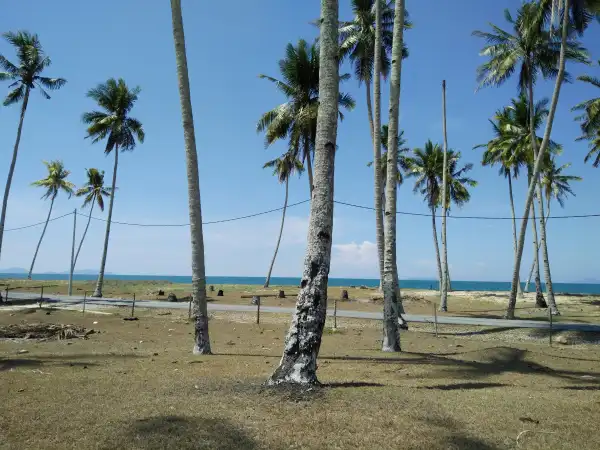
Figure 1: Kampong Mangkok, facing Pantai Penarik and the blue waters of South China Sea.
Kampong Mangkok is a mix of old and new – kampong houses, with unvarnished timber aged by sea breeze, laden with salts; old traditional Malay houses transported from all over Terengganu, re-constructed;and new Malay and concrete beach houses. It is populated by hundreds of swaying coconut trees, casuarina trees, grazing cows and goats. Occasionally a kampong boy cycled past. The breeze blew softly from the sea on most days. The fine white sandy beach stretched from as far as the eyes could see, sometimes tainted by discarded plastic bottles and all kind of debris brought in by the waves, left half buried in the fine sand.
Straddled between two bodies of water, the village lends two very different kinds of charm. On one side, I saw two brothers fishing as a boat passed by on the Setiu river. This part of the river exuded a kampong charm that a film producer fell in love with and decided to shoot some scenes here for the 2018 production of the film “Pulang”. Parallel to the Setiu river is the asphalt coastal road, lined with coconut trees on one side and the sea on the other. As I cycled along this road, I chanced upon a Malay gentleman standing, with one hand holding on to a line dangling from the top of a coconut tree. As I looked up, I saw a boy perched on top of the tree. The boy, who I later learned was called Amin (Fig 2), aged 14 years old, selected specific bunches of coconuts, tied them with the string, and the man would hoist the bunches safely down to the ground. This the boy would do for several times until he was satisfied there were no more nice pickings. He worked his way down while clasping the trunk with ease without the use of any gadget or safety harness. Then they would pick another three or four more coconut trees to select more bunches.
It was hard work getting the coconuts off the trees, some reaching to more than 60 or 70 feet high. In coconut farms in Thailand, Sri Lanka, Indonesia, Malaysia, India, coconut farmers use macaque monkeys to pick coconuts. Thailand took coconut plucking to the next level by having a Buddhist-inspired school in Surat Thani to train monkeys. The school it seemed was funded to teach monkeys how to pick coconuts without use of force or violence. The practice of using pig-tailed macaques to pick coconuts started since around 400 years ago (https://www.npr.org Eliza Barkley,2011). Malaysia too has a school in Padang Halban, Kelantan, run by a 63 year old grandfather, Wan Ibrahim Wan Mat (news.com.au, April 2018) to train macaques to pick coconuts. For Amin, unschooled and living at poverty level, climbing coconut trees was the only means of earning a few ringgit a day. But plucking coconuts is certainly not for the faint-hearted ..…..
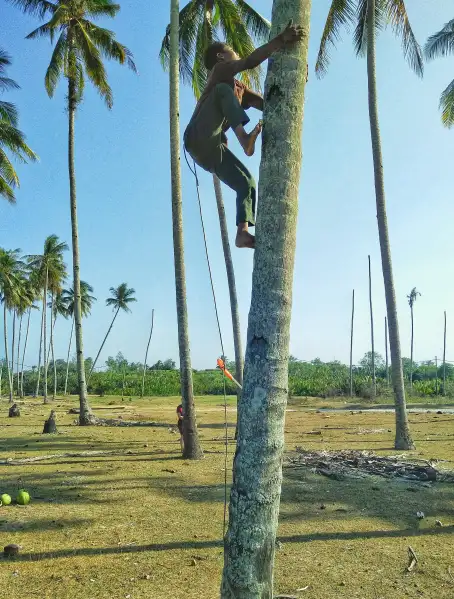
Figure 2: Amin, agile as a monkey, as if “walking” up the coconut tree in Kampong Mangkok without using any safety harness or gadget.
If you keep driving further down the coastal road towards Kuala Terengganu, you would reach another village called Kampong Telaga Papan. Kampong Telaga Papan was where I found a Malay artisan working on a boat. You would see many boats moored (Fig 3) along the Sungai Chalok near Pulau Besar and along one side of the river is an open-air boat-building facility, located among the mangroves. When I first saw him, Pak Peng was busy smoothing and sanding some wood planks. He had been in the boat-building industry since he was 14 years old and his family had been at it for as long as he remembered. But the art of Malay boat-building is dying, Pak Peng lamented and it was sad that the young have no interest in the art, because according to one German Malay-boat owner, Christoph Swaboda, Malay boats built in Pulau Duyong is of high quality.
In Kampong Telaga Papan itself, you will find a small tributary flowing from Sungai Chalok into other parts of the mangroves. This tributary, flowing among the mangroves, is ideal for a late morning of kayak when the ocean tide rises and the tributary is filled with water. We have kayaked in Krabi , in clear blue waters, ending up paddling into caves and in between the small islets. But kayaking on the tributary off Sungai Chalok in Telaga Papan was a totally different experience altogether because here, the water is murky. We kayak down this tributary a few times but after finding out from one fisherman that there was a sizeable crocodile swimming in the murky waters, we decided to give up kayaking here.
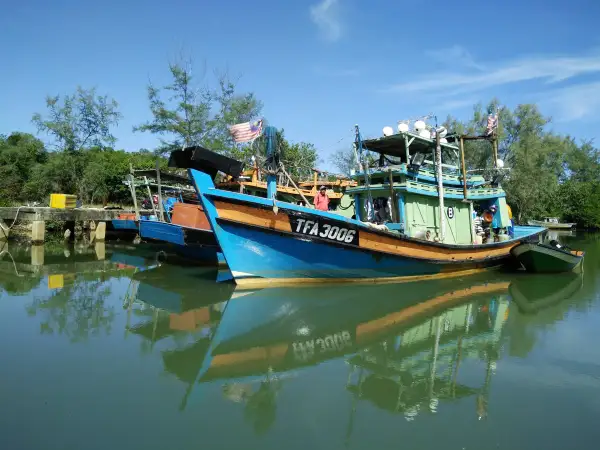
Figure 3: Boats moored in the boat-building facility around Kampong Telaga Papan.
If you drive further south from Telaga Papan, you will arrive at Merang Jetty where you can take a boat all the way to Pulau Redang. I don’t snorkel but my friends love snorkeling and would spend hours swimming among the corals and the fishes. While the boat was bobbing up and down with the waves, I watched little fishes wriggling and tugging at the bread crumbs I scattered into the crystal-clear water.
Eight hundred meters before reaching Pak Peng’s place, you would have passed a small open-air kampong restaurant next to a mosque in Telaga Papan, right off the main road called Restoran Kak Zah. It is run by a family and friends and the restaurant is a popular breakfast place for truck drivers, tourists and locals passing by on their way to work. Fishermen spent hours exchanging stories in endless conversations, recalling their many fishing trips in the waters off Terengganu, while seated at a rustic wooden table in one corner, over a glass of teh-tarek. The girls serving breakfast there are friendly and you could get almost anything for breakfast here including Malay kueh. My own favourite breakfast is nasi dagang with fried chicken on the side. My friends used to laugh at me, saying the authenticity of nasi dagang is lost without gulai ikan tongkol ( tuna curry). But then I am not one who follow rules anyway and neither am I a “foodie”.
Terengganu culinary is heavily influenced by the taste of Thailand, apart from cuisines from the three main ethnic groups. This is to be expected as Thai influence has been present since time immemorial based on the geography and the history with neighbouring Thailand. Here the food is mainly rice-based. Some of the popular dishes are nasi kerabu, nasi ulam, nasi dagang, nasi lemak, ikan bakar tawar, sata, otak otak and keropok lekor.
Somewhere in Kampong Mangkok, there is this beautiful kampong house where I would spend days on end on the verandah, observing the changing colors of the skyline and the reflections upon the sea. The tranquility in combination with the surrounding nature inspired an atmosphere of utmost creative concentration. I would be tapping away at my keyboard for many hours, writing and rewriting perfect-sounding thoughts. However, on one particular evening, it was the beautiful sunset over Kampong Mangkok that captured my imagination (Fig 4). Silhouette of endless rows of coconut trees, standing tall looking like black soldiers against the brilliant red sky was breath-taking. It was not long after when my thoughts were interrupted by the azan call for maghrib prayers.

Figure 4: Sunset in Kampong Mangkok in Penarik, Terengganu
By night time, life around the beach house would be completely different. It would be dark outside with no street lights and so quiet around the house, you could only hear the sound of an old, noisy fan with rusted blades. Occasionally you could hear the waves. With no television, no phones, and no internet we were off the grid,so to speak. But it certainly was a much welcome respite. On these dark nights, little flickers of light, fluttering around the room would entertain you. These are the fireflies. And if you listened properly, you could hear the raucous chorus of the cicadas, and once a while, the sound of a motorcycle negotiating a corner on the asphalt in the distance, piercing the still of the night.
A few hours of sleep afterwards and the alarm went off again. It was time for the usual “meeting ” between creature and Creator. Out on the veranda, rubbing sleep from my eyes, while seated cross-legged on the prayer mat, the ritual for early morning prayers and zikr, amidst the cold morning breeze commenced. Hours later, as I turned to take a peep at the sea, I was greeted by a delightful shimmering carpet of calm in the first blush of the sun. The birds were chirping excitedly, exchanging calls while perched at the top of the casuarina trees. Another day of endless tranquility filled with the sounds of life – the chirping birds, the chattering monkeys, the croaking frogs, the rhythm of the waves and the deep sound of well-mannered four-stroke fishing boat engine. It was the beginning of a new day.
Heading back towards Kuala Lumpur after such an exhilarating time spent in Setiu, was to me a kind of a punishment. Driving the 32 year-old Toyota Land Cruiser, the Spicy Mustard, was torturous. The engine would crank up so much noise, it was impossible to carry on any conversation throughout the entire 500 kilometer-journey. But we enjoyed the trips anyway: the stops for prayers, the snacking, the dozing-off on seats that had its fair share of wear and tear and the endless possibility of exciting unplanned stops. But driving the Spicy Mustard required skills because it tended to veer to one side, and the brakes sometimes failed. When parking the vehicle on a slope, little stops had to be placed underneath the tires to ensure the car did not roll off. Once, while parked on a gentle slope, the car did roll off. Spicy Mustard took on a life of its own and finally ended crashing the gate of a neighbour, missing a brand new Ferrari parked just inches away.
If not for the love of writing and blogging, it is impossible for me to stay completely alone. The box, the mobile phone, the keyboard, the 14-year old car, family and forward-looking friends, are enablers for the AAs (those aging alone). A lunch or tea and a good laugh at the nearest coffee-shop with girlfriends every once a while, is a good break. We would talk about anything from politics, travel, anti-ageing creams, arthritis, frozen shoulders, grand children to good food. This spurt of intermission is necessary for me to stay focused on my writing. Two hours of “girlfriends-therapy” and I am once again refreshed for another session of creative concentration in complete seclusion.
But creative concentration is not always achievable even in sedate Shah Alam. Life in Shah Alam is generally quiet, however, during weekends, I would hear squeals of children’s laughter coming from the swimming pool below. Sometimes, hysterical screams broke the silence with excited children racing down corridors to see who reached the door first. But late at night, it would be so quiet I could hear the sound of a drop of a coin on the floor above me. Then there is that constant dragging and shifting of a chair across the floor above late at night, and my creative concentration disintegrates.
But going by what the fiction writer, Stephen King advises on having a writing target of 2000 words a day in his “On Writing- A Memoir of the Craft”, I would be happy if I could manage 500. Perhaps for Stephen King, who thinks that writers should have the ability to remember the story of a scar, 2000 words a day is a breeze.
Wherever I traveled, wherever I stayed, my mind would wonder back to the promise of beautiful Kampong Mangkok. Sitting on the verandah, observing the changing colors of the skyline, basking in the realm of serenity and peace that a beach-front kampong life provides (Fig 5), while tapping away at the keyboards, is paradise to me. How could it not be, when you could capture the vibrant sunrise from the beach in Kampong Telaga Papan and the stupendous sunset from the mangroves in Kampong Mangkok
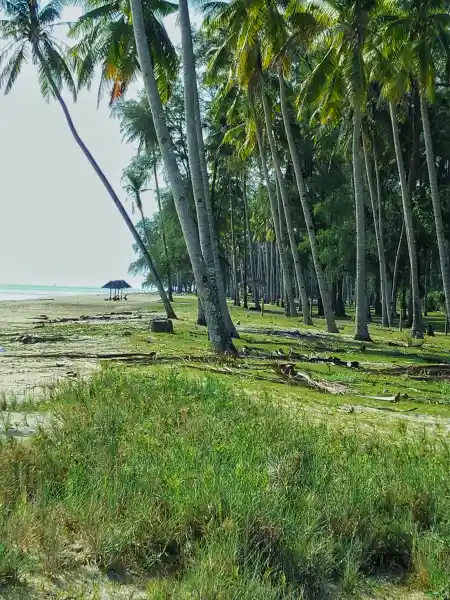
Figure 5: Pantai Penarik, Kampong Mangkok
Kampong Mangkok has everything nature could offer – shimmering blue waters, fine white sandy beaches, sunshine on most days, swaying coconut trees, friendly kampong folks, unique habitats of Setiu Wetlands and the chorus of the cicadas. The uninterrupted tranquility provided by nature surrounding the kampong, oozed an atmosphere of spiritual charm, a closeness to the Creator and a heightened creative concentration I desperately need to further explore my passion for writing and blogging. Another month, and I might be heading back this wayagain.
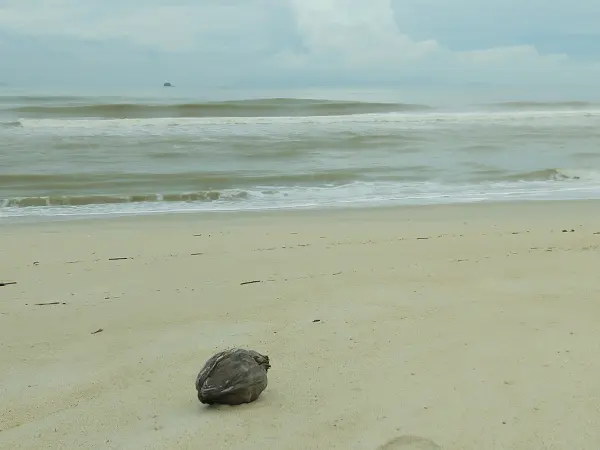
Pantai Mangkok with fine white sand, and the lonely coconut
